The Super Nintendo Entertainment System (SNES) was home to some of the most iconic and memorable fighting games of the 90s. From the classic Street Fighter and Mortal Kombat series to the lesser-known but equally entertaining games like Art of Fighting and Samurai Shodown, the SNES provided a platform for players to test their skills and challenge their friends in intense, one-on-one battles.
If you love the art of fighting and want to relive some classic games, read on for our SNES fighting games of all time.
If you don’t have access to a SNES, then take a look at our SNES emulators article where you can play the games on modern platforms.
1. Street Fighter II Turbo Edition

There should be no surprise in this top spot. Street Fighter II, developed by Capcom, had a profound impact on the gaming industry and popular culture. The game’s initial release in 1992 revolutionized the fighting game genre, with its stunning graphics and exciting gameplay. The game’s popularity led to several re-releases and improvements, such as the 1993 release of Street Fighter II Turbo: Hyper Fighting for the SNES. This version included new features such as mirror matches, improved graphics, and the ability to play as boss characters.
The game’s impact can still be felt today, with a dedicated fanbase and its inclusion on the SNES Classic Edition. Street Fighter II Turbo shares similarities with another popular game on the SNES Classic, Super Mario Kart, as both games helped to create new genres in the gaming industry. The game is accessible to both casual players and more hardcore fans, providing a fun and challenging experience for all.
Super Street Fighter II Turbo was chosen for the SNES Classic Edition over other entries in the series for a reason, it may be due to nostalgia and popularity among casual fans. However, a good number of fighting game fans have expressed a preference for Super Street Fighter II, with its new characters, stages, and improved sound and graphics. Regardless, all versions of Street Fighter II on the SNES are considered to be excellent games, with Street Fighter II Turbo being the most popular and well-loved entry in the series will have to represent this throne.
2. Killer Instinct
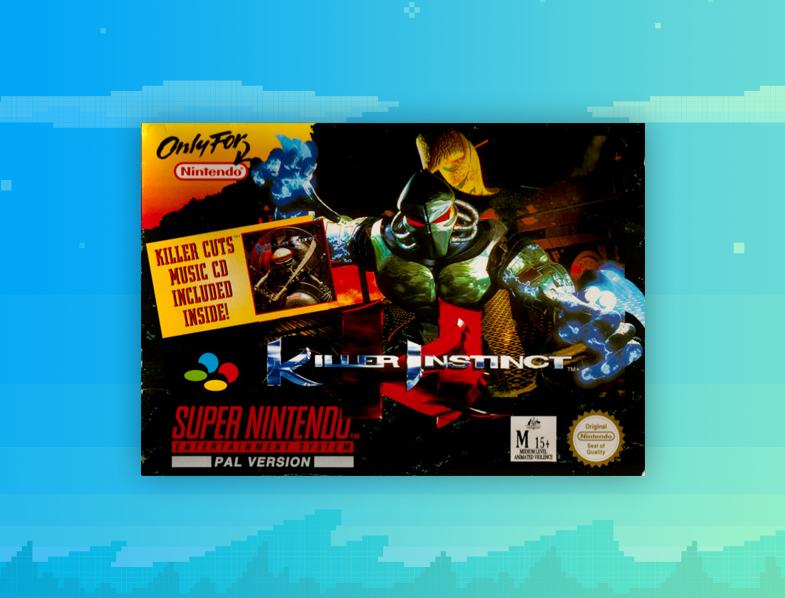
Killer Instinct is a classic fighting game that was first released in 1994 for the Super Nintendo Entertainment System and later ported to the arcades. The game was developed by Rare and published by Midway Games and was known for its fast-paced action and combo-heavy gameplay, which was innovative for its time. The game’s unique selling point was its ultra combo system, which allowed players to string together massive chains of hits to deal massive damage.
Killer Instinct quickly became a popular game, and it was well-received by both fans and critics. The game was known for its smooth animation, intricate and challenging gameplay, and electrifying soundtrack that was a perfect fit for the over-the-top action.
In 2013, Killer Instinct was re-released as a reboot for the Xbox One, as part of Microsoft’s effort to boost the platform’s gaming offerings. The modern remake of Killer Instinct was a hit, with fans and newcomers alike praising its improved graphics, updated gameplay mechanics, and online multiplayer options. The game also added several new characters to its roster, along with new stages, game modes, and customization options.
Killer Instinct’s legacy can be seen in modern fighting games, with many of its innovative mechanics and combo-based gameplay elements influencing the genre. The game’s popularity has also continued to endure, with fans still playing the modern remake to this day and eagerly awaiting the next installment in the series.
Killer Instinct is a classic fighting game that has stood the test of time, and its modern remake was a welcome addition to the franchise. The game remains popular and continues to influence the fighting game genre, and its legacy is sure to endure for years to come.
3. Ultimate Mortal Kombat 3
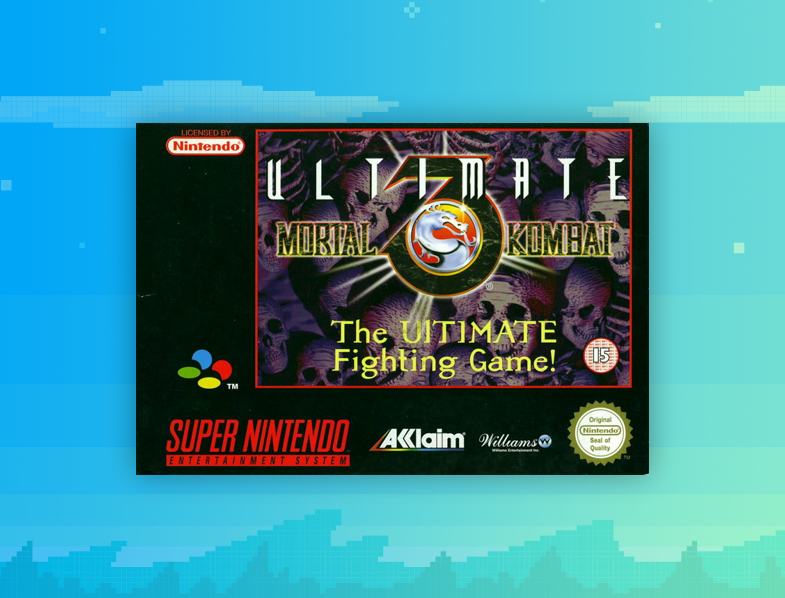
Ultimate Mortal Kombat 3 is the best of the SNES trilogy. This specific entry adds a “chain-combo” system, level-specific attacks, a “dash” feature, and two new finishing options: Mercy and Animality. In Mercy, players can restore some life to their opponent after defeating them twice in a row. In Animality, a fighter transforms into an animal and usually kills their opponent.
This new entry also slightly improves graphics and sound, although the impact is less noticeable than in the first two games. Additionally, a 2-on-2 mode has been introduced, allowing players to select two fighters instead of one. This mode is reminiscent of the “endurance” levels in the original Mortal Kombat, but it did not end up being very popular.
Out of the three original Mortal Kombat titles on the SNES, Ultimate Mortal Kombat 3 stands as the favorite with its impressive roster, new game modes, and hidden secrets to master. Although it lags behind Street Fighter Alpha in terms of new gameplay, it still manages to be simple and easy to play.
Getting a copy of Ultimate Mortal Kombat 3 for the SNES today may be difficult, but it can be found in the Mortal Kombat Arcade Kollection for PS3, Xbox 360, or PC. The original PC port is also available on GOG.
4. Samurai Shodown
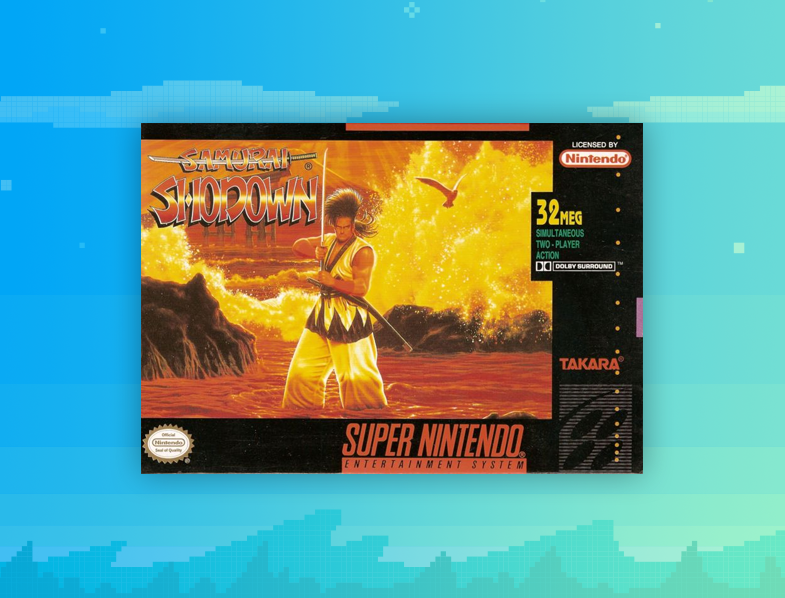
Samurai Shodown is a fighting game series that was first released in 1993. The modern remake, aptly titled Samurai Shodown, was released in 2019 for modern gaming platforms. The 2019 remake stays true to the original’s 2D weapons-based fighting style, but with updated graphics and new mechanics. It also features a roster of returning favorites and new characters.
One of the strengths of the remake is its faithful recreation of the original’s gameplay. Fans of the series will feel right at home, and new players will appreciate the depth and strategy involved in the battles. As of this writing, rollback netcode is being tested for its implementation.
The SNES original features a roster of unique characters each with their own weapons and special moves, set in feudal Japan. The graphics are colorful and well-detailed, capturing the look and feel of the time period. The gameplay is fast-paced and challenging, requiring precise timing and skill to execute combos and special moves effectively.
One of the strengths of Samurai Shodown on SNES is its diverse roster of characters, each with its own unique playstyle and special moves. The game also features a variety of game modes, including single-player arcade and versus modes, as well as a tournament mode for players to compete against each other.
One weakness of Samurai Shodown on SNES is that it doesn’t have the same level of polish and refinement as other SNES fighting games, such as Street Fighter Alpha or Mortal Kombat. The controls can be a bit stiff and unresponsive at times, and the hit detection can be inconsistent. Additionally, the game’s limited move sets and simple combo systems can make it feel shallow compared to other fighting games.
5. Street Fighter Alpha 2
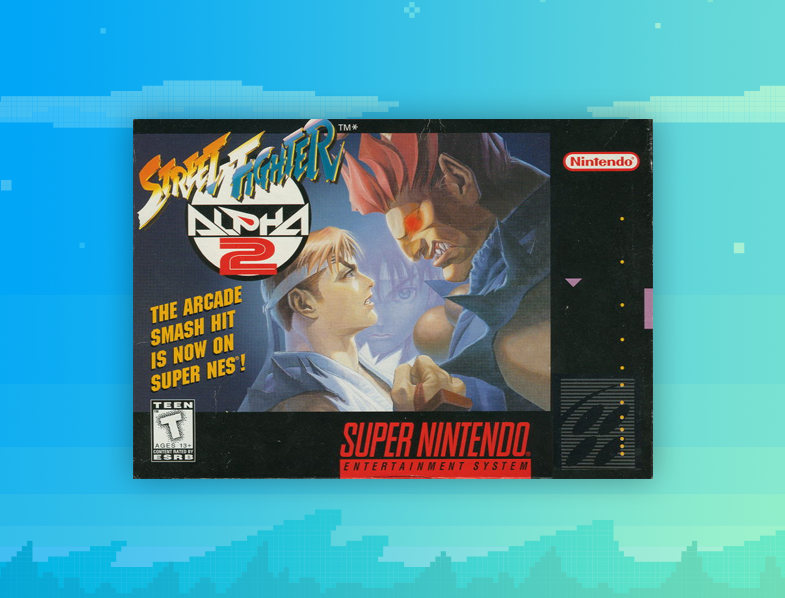
Another Street Fighter game? Yes, that is the case. The Alpha series differ substantially from the mainline hence there is no redundancy in this ranking.
Street Fighter Alpha 2 is a 1996 fighting game developed and published by Capcom for the Super Nintendo Entertainment System. It is the second installment in the Street Fighter Alpha series, a sub-series of the larger Street Fighter franchise.
The game features improved graphics, smoother animation, and expanded character rosters compared to its predecessor, Street Fighter Alpha: Warriors’ Dreams. Street Fighter Alpha 2 also introduces new gameplay mechanics, such as the Alpha Counter system and the Custom Combo system, which allow players to perform special moves and combos with greater ease.
Street Fighter Alpha 2 received generally positive reviews from critics and fans, who praised the game for its refined gameplay, polished graphics, and expanded roster. Some critics also commended the game for its faithful representation of the original Street Fighter series, as well as its successful incorporation of elements from other fighting games.
However, the SNES version of Street Fighter Alpha 2 is not as well-regarded as its arcade and other console counterparts, due to its limitations in graphics and sound quality. The SNES version also has fewer characters and stages than the arcade version. Nevertheless,it is Street Fighter
6. Gundam Wing: Endless Duel
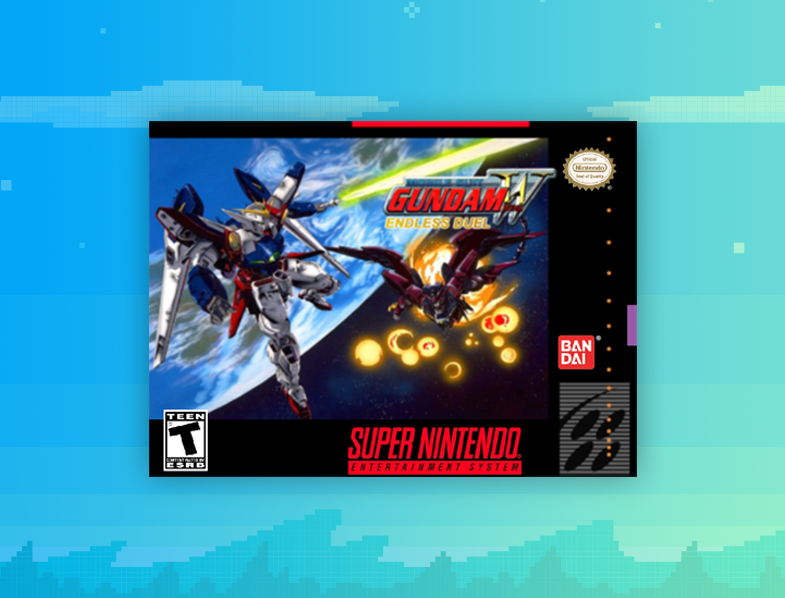
Let us face it, the Gundam Wing anime is the worst Gundam title, but rose-tinted glasses screw our view of things. Nevertheless, Gundam Wing: Endless Duel is a good game. This game is as good as how the anime is bad.
This game made a significant impact in the West, with its 49-episode anime series airing on Cartoon Network and becoming one of the most recognizable entries in the Japanese science fiction mecha series. The video game adaptation by Natsume, released in 1996 in Japan, made the series palatable with its unique fighting style. Natsume, known for their successful Nintendo games such as Natsume Championship Wrestling and Power Rangers: The Fighting Edition, used the same engine for Gundam Wing, but with added enhancements.
The game features a choice of mobile suits and pilots from two opposing factions: the Space Colony Gundams and the Earth’s Romefeller Foundation Army. The roster includes the original five Gundams, three OZ mobile suits, and two second-generation Gundams. The graphics are stunning, with highly detailed backgrounds, each with its own individual tunes, and each Mobile Suit is made up of multiple sprites.
The fighting mechanics shine with air blocking and Vernier thrust maneuvering, allowing for dash and vertical jumping above the floor level. Attacks are distributed between weak/strong punch and weapon attacks, with moves spread across specials, super specials, and in most cases, Vulcan machine guns. The gameplay is simple to learn but requires mastery of the Power bar and correct timing of counters, evasions, and unleashing the Mobile Suit’s arsenal.
Sadly, Gundam Wing: Endless Duel was never released in the West, but an English patch was released in 2002 by Aeon Genesis, translating the pilot’s dialogue into the main story mode. The game’s one-on-one fighting style and Trial mode, an endurance test of increasingly difficult battles, make it a great choice for solo players.
7. Fatal Fury 2
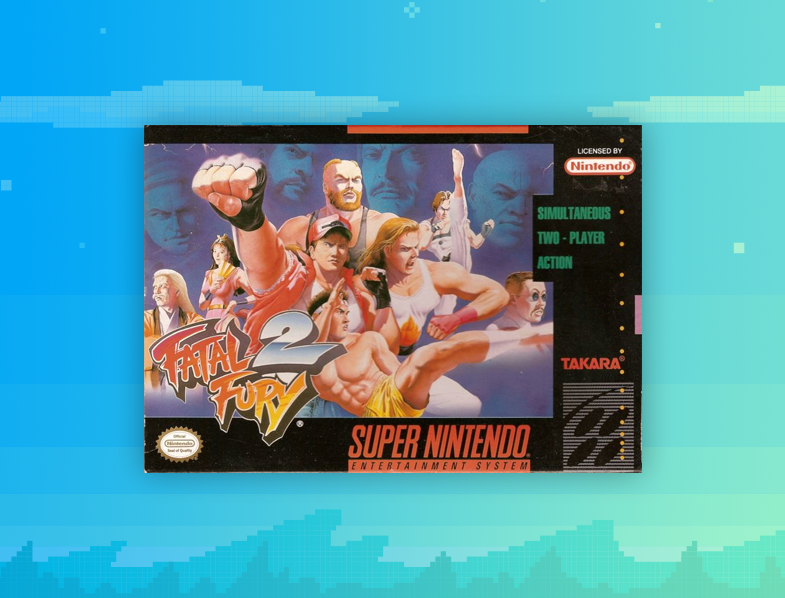
Fatal Fury 2 for the SNES is a solid choice for fans of SNK games who don’t have a Neo-Geo. Although it can’t match the Neo-Geo version in terms of animation, it still offers a polished and complete experience. The game controls well with the SNES controller and the four-attack button setup (two punches and two kicks) is standard Neo-Geo. The story is also quite good, following the tournament fighters as they battle their way to face host Wolfgang Krauser.
The graphics and sound are both well done. The backgrounds are highly detailed and retain the arcade version’s look, while character and stage animations are smooth despite a bit of choppiness. The sound effects and musical soundtrack are well-emulated on the SNES’s powerful sound chip.
The replay value is strong, with the added bonus of being able to play as the bosses with a special code. With no major flaws and a great controller, this game has lasting appeal for fighting fans.
If you don’t have a Neo-Geo, this is the version to buy. While the Neo-Geo version is the best, the SNES version is a great alternative and is closer to the arcade version than the Genesis version. The SNES is a powerful system and a great choice for playing SNK games at a lower cost. Even then, by emulation, everything is equal cost-wise.
8. Ranma ½: Hard Battle
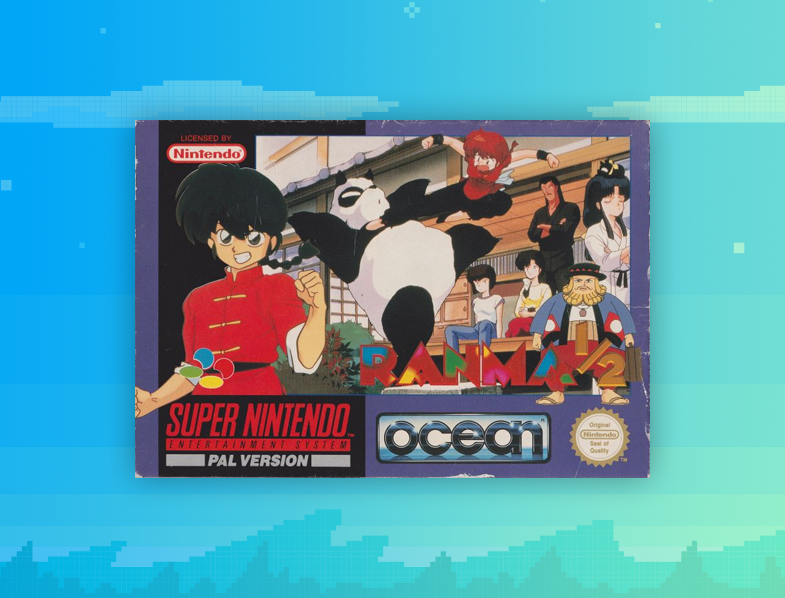
NCS’s Ranma ½: Hard Battle is the second fighting game in the Ranma ½ series for the console and offers a few new characters not seen in the previous two 16-bit games. At first, only male and female Ranma are available, but you can access the others by holding L and R while selecting your character. This game was released in the US, mostly unchanged, with only the addition of the English dubbed voices due to the growing popularity of manga and anime.
The storyline of Hard Battle is straightforward: Kouchou is trying to get all the characters to fight for his benefit, similar to Mortal Kombat 2’s Shao Kahn. The gameplay is similar to the previous game, “Chōnai Gekitōhen,” but improved with better hit detection, control responsiveness, graphics, and sound. The controls have been modified, allowing blocking with L and R or holding back, and the X button is now the default jump button with the option to assign it to the Up button on the D-pad. The A button now does nothing, and specials are still performed with simple motions but include button charging. Unfortunately, it’s no longer possible to switch characters between fights, but there’s an elimination match instead.
Hard Battle is a marked improvement over “Chōnai Gekitōhen” due to better game physics, control responsiveness, hit detection, and standardized controls. It’s worth playing for its novelty and improved gameplay.
9. Clayfighter
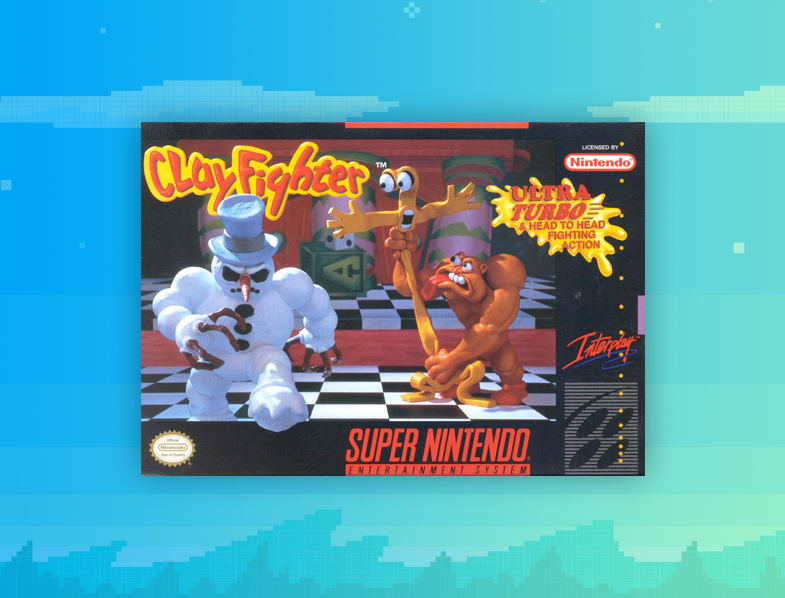
Clayfighter is a 2-D fighting game that differs from other games in the genre by having larger characters and a more comical approach. The game offers a tournament mode with unique bosses and allows players to set the difficulty level and pace of the game.
The controls are similar to games like Street Fighter and Mortal Kombat, with the ability to block and use combinations to temporarily daze opponents. The game also offers unlimited continues, a two-player mode, and options to practice and compete on harder levels. The graphics and animations are well-done and each character has its own specific animations and sound effects. The game offers a good amount of replay value with its comical approach, practice options, and two-player mode.
10. WWF Raw

WWF Raw for the SNES is considered to be one of the best in the series. The series consisted of WWF Super Wrestlemania, WWF Royal Rumble, and then Raw. Although WWF Super Wrestlemania received negative reviews, Royal Rumble was a good game with a decent roster. However, it had some limitations, such as not being able to win a match through submissions, and pins working differently than expected.
Raw addressed these issues and offered more play options, including one on one, tag team, Bedlam, Raw Endurance Match, Royal Rumble, and Survivor Series. The game also allowed players to control only one wrestler in a handicapped match against the CPU. Raw also allowed players to win a match through submissions, with only Bret and Owen Hart having submissions as finishers.
Compared to Royal Rumble, Raw offers more options and improved gameplay. The only criticism mentioned is the inclusion of Luna Vachon as a selectable character, who the CPU tends to choose frequently.
Despite the advancements of newer games like WWF Wrestlemania 2000, Attitude, Warzone, and others, WWF Raw for the SNES still has high replay value and is a lot of fun to play.
11. Mighty Morphin Power Rangers: The Fighting Edition
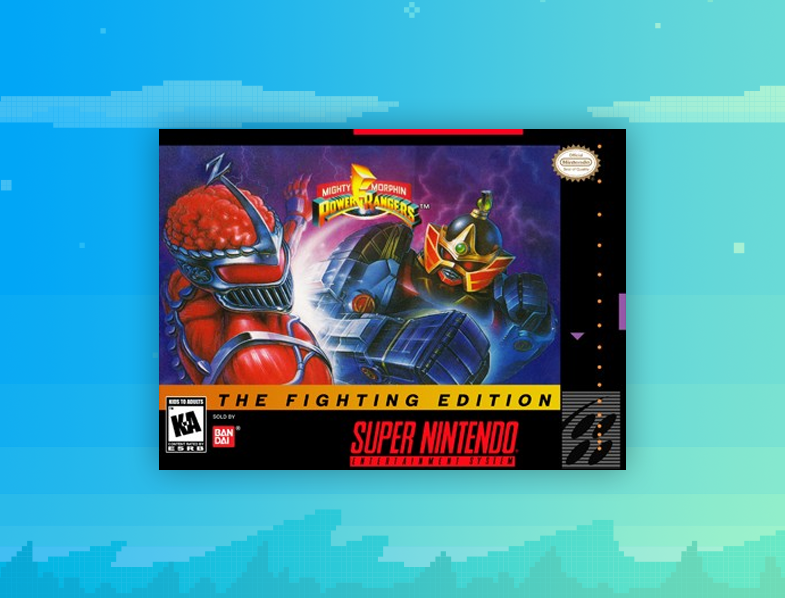
The Power Rangers series was a hit on the SNES console, with two games released to much success. This game in the series is a departure from the previous Power Rangers fighting games, as players no longer control the beloved Power Rangers, but instead select giant robots, known as “bots”, to fight against each other in a tournament-style battle.
The game is a two-player battle tournament, similar to the Street Fighter and Mortal Kombat series. Players get to choose from a roster of good and bad characters, including both robots and monsters, each with their own unique moves and abilities. For example, some bots carry weapons such as swords to slash at opponents, while monsters have special powers such as breathing fireballs. In addition to the bots and monsters, players can also choose to fight as the Power Rangers, who each have their own weapons and fighting styles.
The graphics in this game do not match the level of quality seen in its predecessor, The Mighty Morphing Power Rangers. The character animations are not as good as they used to be, but the design of the robots and monsters is still recognizable from the TV show. On the other hand, the background designs in the game are well-made and fluid, with no choppiness in the animation. The fighting stages are also well-designed and appropriate for the characters, such as fighting in a construction building for the Power Rangers or in the city for the bots and monsters.
12. Art of Fighting 2
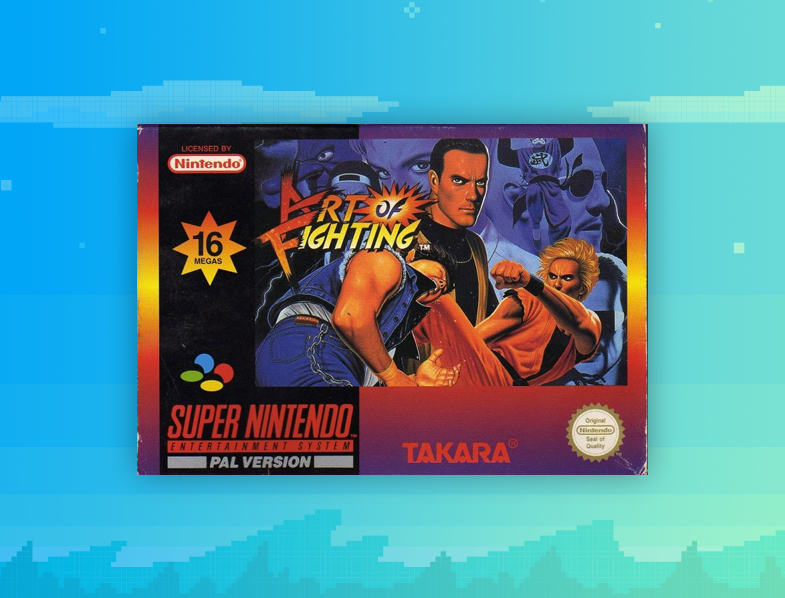
Art Of Fighting 2 is a fighting game that was released for the SNES in 1994. It is the second installment in the Art Of Fighting series and offers improved gameplay and graphics over the first game. There are 12 playable characters to choose from, including some new additions to the roster. The game features a spirit gauge that decreases as special moves are performed and can be recharged by holding a button down. There are two strengths of punches and kicks, which can be performed by holding the buttons down for different lengths of time.
The single-player arcade mode is challenging and there are story endings for each character, but the two-player mode is more enjoyable and allows for more experimentation with the characters. The game has some visual improvements, including detailed backgrounds and a facial damage feature that shows bruises and blood as the fight progresses.
13. Weaponlord
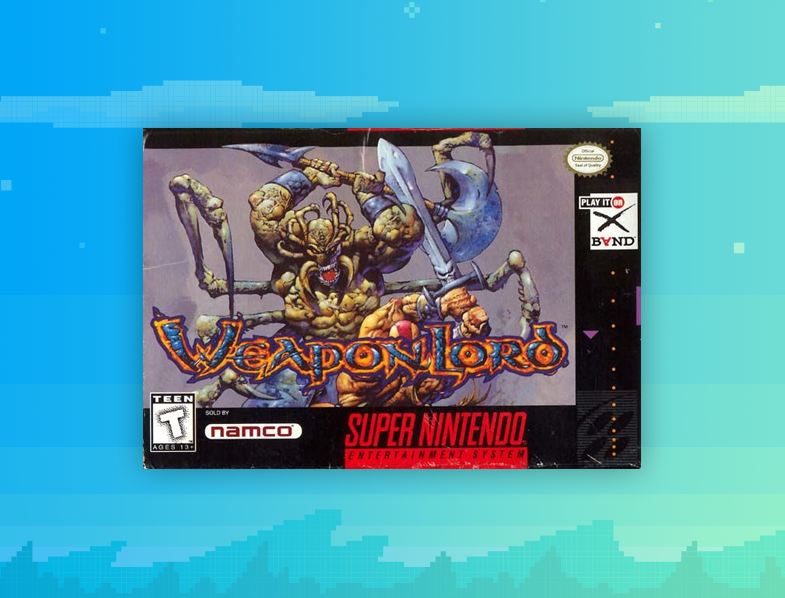
WeaponLord is a cult classic 2D weapon-based fighting game released in 1995 for the Super Nintendo and Sega Genesis. It features 7 playable characters with unique weapons and fighting styles, advanced gameplay mechanics, and a dark fantasy setting. The game was compatible with the Xband online multiplayer service and had a slightly different version for each console, with the SNES version having better graphics and sound quality while the Genesis version had smoother gameplay. WeaponLord was developed by Visual Concepts and published by Namco, and initiated by Ken Lobb before he left the project.
14. World Heroes 2
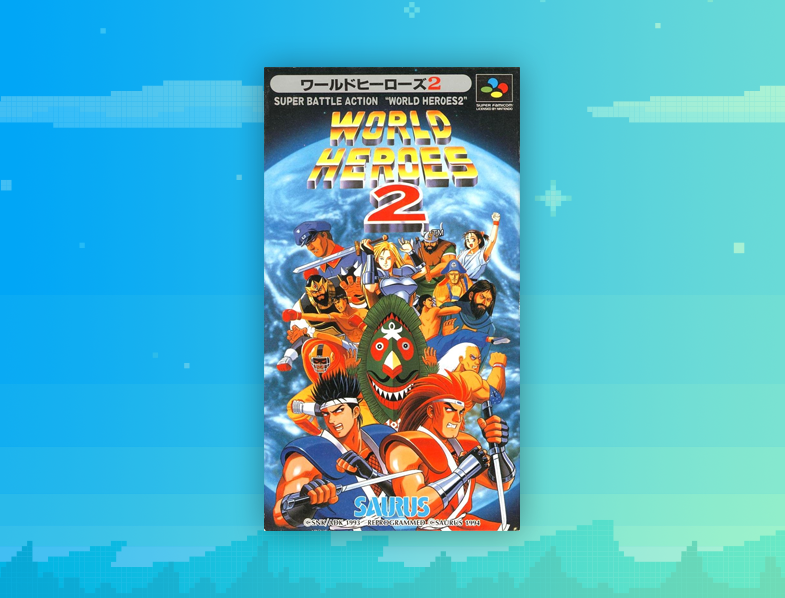
When Street Fighter 2 was released in the early 90s, it sparked a trend of 1 on 1 fighting games. One of its major competitors was SNK, a company that had its own arcade hardware called Neo Geo. The Neo Geo platform was used to release numerous fighting games, including the first game called World Heroes. Despite its numerous similarities to Street Fighter 2, World Heroes was not a bad game, but rather a rip-off of the best.
The storyline of World Heroes, like most fighting games, was not its strong suit. A scientist had built a time machine and was bringing together the strongest fighters from different time periods to compete against each other. The characters in World Heroes were also reminiscent of those in Street Fighter 2, with similarities in their play style. For example, Hanzo and Fuuma, the red and blue ninjas, played like Ryu and Ken, while Brocken, the German cyborg, played like Dhalsim. Other characters included Janne, a female knight, J Carn, a Mongolian warrior, Rasputin, the famous Russian monk, and Muscle Power, a Hulk Hogan look-alike.
The gameplay was straightforward and fun, with 1 on 1 fighting and 2-3 special moves for each character. The game also offered two match types, Normal and Fatal Match, with the latter taking place in an arena with level hazards. The graphics were impressive for the time, with good color use and well-done backgrounds. However, the sound was a disappointment, with boring and repetitive music, muffled sound effects, and voices. The control was done well, with a simple punch, kick, and throw button set-up, and the option to change it to a more precise 4-button set-up.
World Heroes on the SNES was a good fighting game, especially for those who are new to the fighting genre or those who don’t take their fighting games too seriously. The SNES translation was close to the Neo Geo original and a great improvement over the Genesis translation. SunSoft did a good job in bringing this game to the SNES platform.
15. Saturday Night Slam Masters
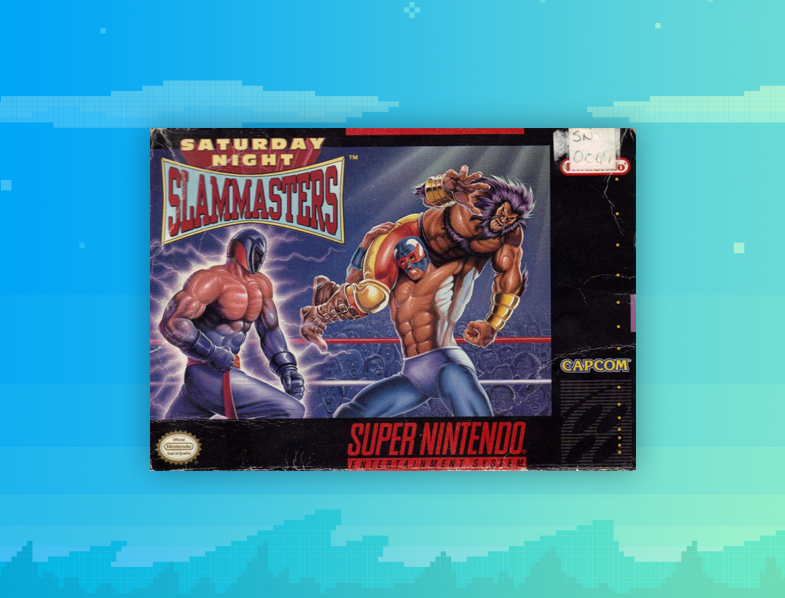
Saturday Night Slam Masters was a hidden gem among wrestling games on the SNES. Although it wasn’t the best and had an annoying grapple-meter, it was still fun to play. The WWF-themed titles looked great and offered a wide range of modes and characters, but Slam Masters was different. It felt like Capcom wanted to make a series out of it, but it never happened on home consoles. There were three arcade versions, including a tag team version, but it didn’t sell well enough to continue.
The game has a clear influence from Street Fighter with well-realized characters, unique fighting styles, and pre and post-match quotes that give each character personality. Haggar from Final Fight is even in the game!
Despite being a wrestling game, Slam Masters felt more like a fighter. The game takes place in a ring with ropes, turnbuckles, and entrances, but it also allows you to leave the ring. The controls consist of punches and kicks, jumps, and grapples. Physical attacks and jumping are easy to do, but grappling requires more precision since the game moves quickly. If you do manage to grapple, the moves are impressive, including gorilla press slams and suplexes. Pins and submissions are also available, but submissions are harder to pull off effectively.
Unfortunately, there’s a lack of match types and modes. The only options are traditional one-on-one matches and a Team Battle Royale mode. With only 8 fighters and 2 bosses, the battle royale isn’t very exciting. The Sega Genesis version replaces the Team Battle Royale with a Death Match and allows you to play as the bosses in solo matches.
The audio department is a mixed bag. The graphics are great, with big characters and colorful outfits, but the sound and animation could use some improvement. Overall, Saturday Night Slam Masters is a fun game to play as a fighter, but if you’re looking for a more “wrestling” experience, look to the WWF games.
16. Primal Rage
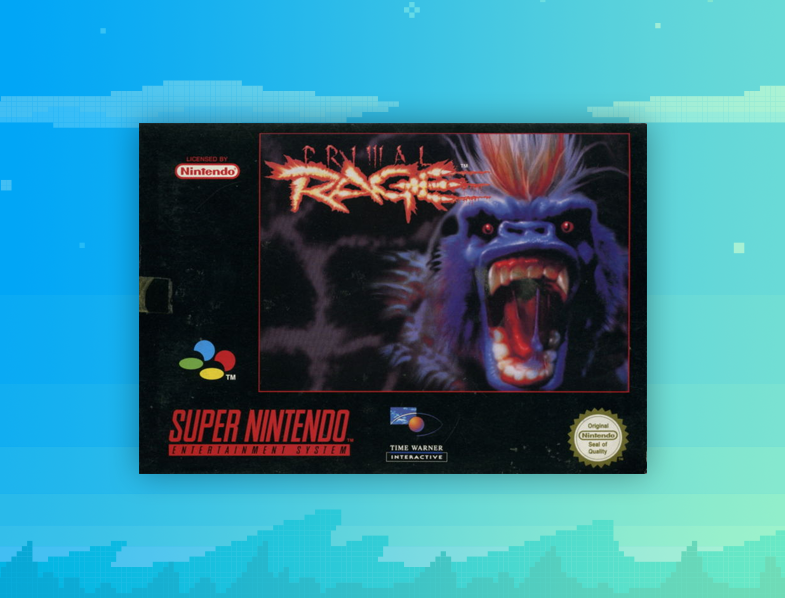
Primal Rage is a fighting game that features dinosaurs and primates as characters. The game takes place in a future world where the continents have formed a skull-shaped “supercontinent” called “New Urth” and the dinosaurs and primates rule as gods over different regions. The player must select a character and travel through different regions to become the world’s single champion. The game’s presentation is dark and atmospheric, but the control scheme can be challenging and make the characters feel slow and unresponsive. The arcade version is preferred over the console versions, which are described as “wholly awful”.



